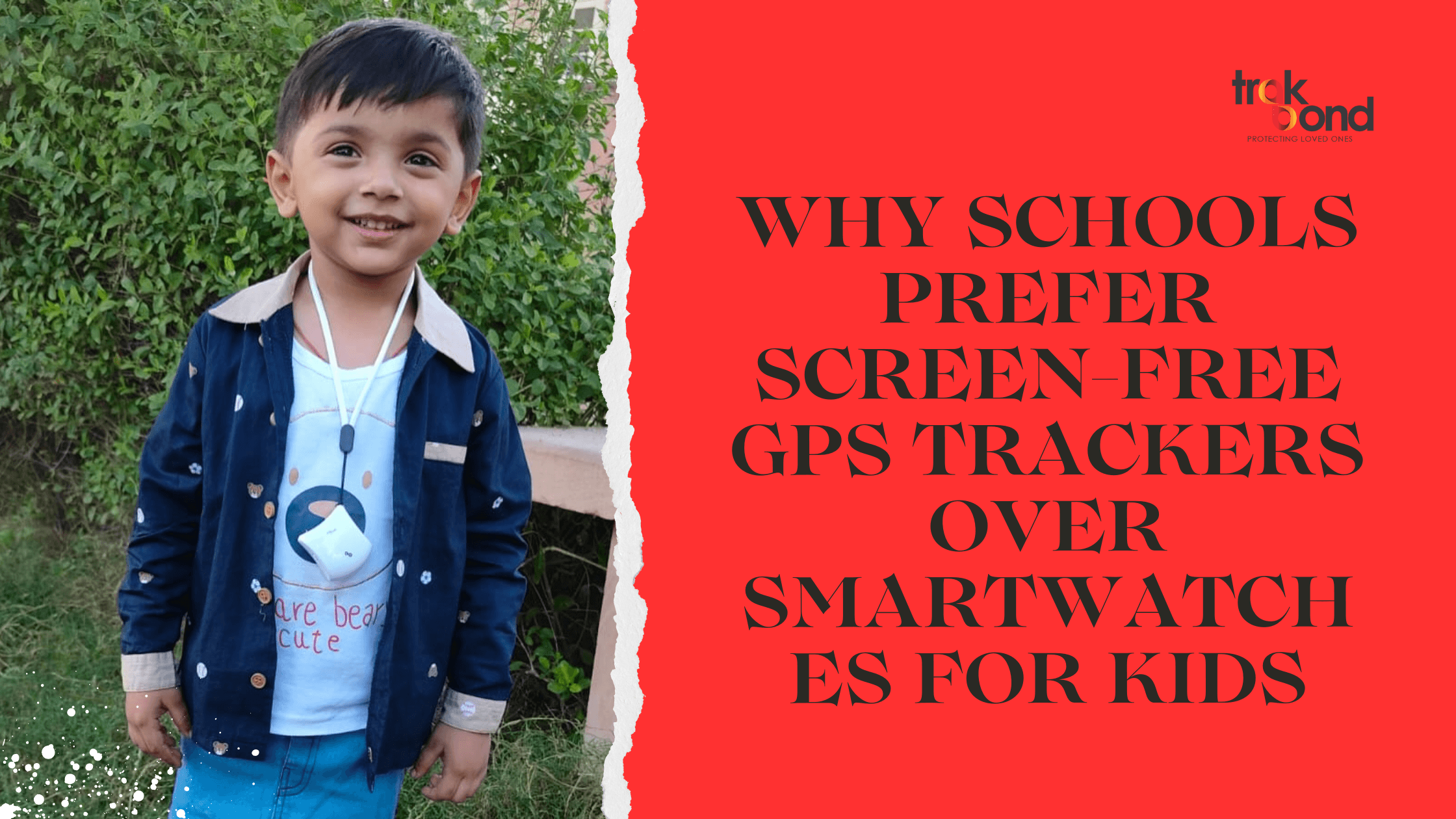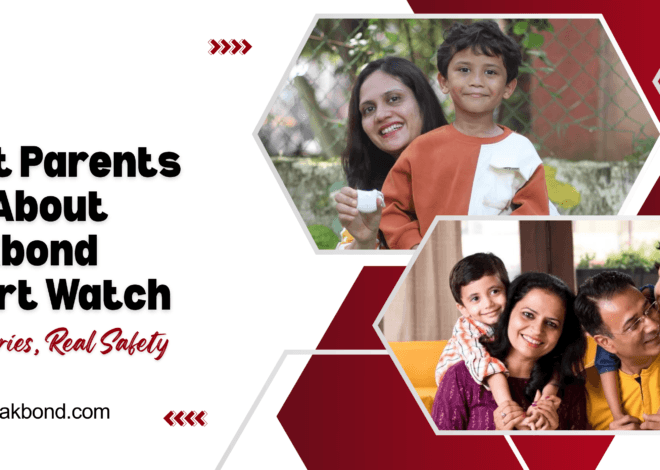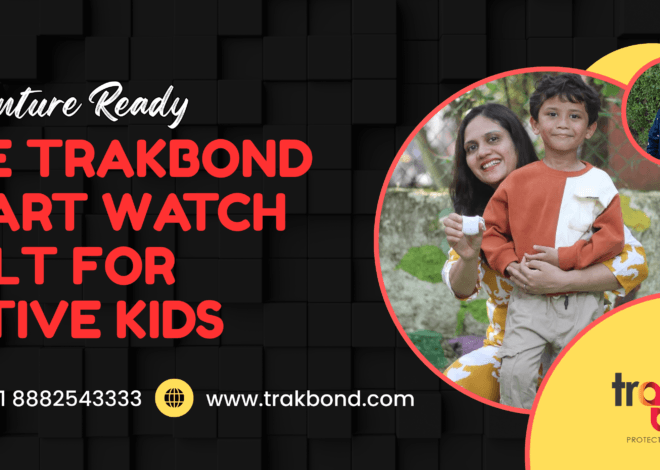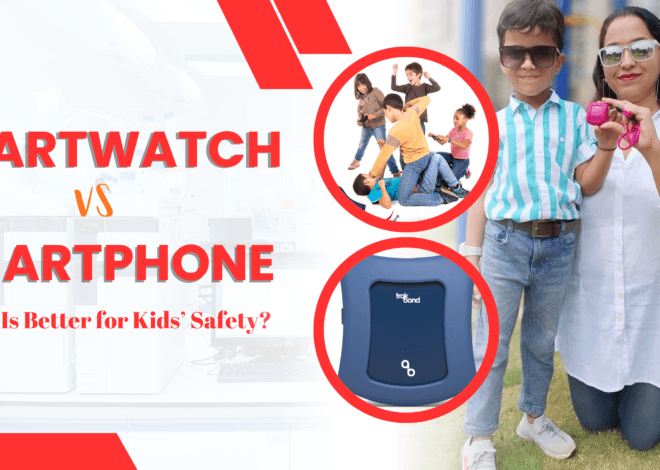
Why Schools Prefer Screen-Free GPS Trackers Over Smartwatches for Kids
In today’s world, where technology plays an important role in both education and safety, schools face a unique challenge — ensuring student safety while minimizing distractions. While smartwatches with screens have become popular among kids, most schools are turning toward screen-free GPS trackers instead. These school-allowed GPS trackers are becoming the go-to solution for parents and educators who want safety without sacrificing focus in the classroom.
So, why exactly do schools prefer screen-free safety devices over display-based smartwatches? Let’s explore the key reasons and understand how these distraction-free wearables are reshaping child safety in schools.
1. The Problem with Display-Based Smartwatches
Smartwatches were initially designed to make life more convenient — with features like texting, gaming, music, and fitness tracking. However, when placed in a school environment, these same features can quickly become distractions.
Common Concerns Schools Have:
- Classroom Distractions: Kids often check messages, notifications, or even play games during lessons.
- Cheating Risks: Some watches allow internet access, cameras, or voice recording, making them a potential exam security concern.
- Privacy Issues: Devices with cameras or GPS-enabled sharing apps raise privacy concerns for other students and staff.
- Cyber Risks: Access to messaging and social platforms may expose children to unwanted communication or cyber threats.
Due to these reasons, many schools worldwide have implemented “no screen devices” policies during school hours — including smartphones and smartwatches.
2. The Rise of Screen-Free GPS Trackers
To balance both safety and focus, the introduction of screen-free GPS trackers has been a game-changer. These devices allow parents to track their child’s location in real time — but without the distractions or risks associated with screens.
Unlike smartwatches, these trackers have a simple, child-friendly design, focusing purely on safety and location monitoring. They are school-approved GPS trackers that offer peace of mind to parents and teachers alike.
Why Schools Approve Them:
- No display = no distractions
- Limited functionality = no misuse
- Location-only focus = enhanced student safety
- Tamper alerts = anti-bullying and anti-loss protection
These features make screen-free safety devices ideal for the classroom setting — where learning comes first and safety stays constant.
3. Safety Without Distraction
The primary goal of distraction-free wearables is to keep children safe while allowing them to stay focused on their studies.
Key Benefits:
- Real-Time GPS Tracking: Parents can monitor their child’s movement from home or office.
- Safe Zone Alerts: Set up geofences around the school, home, or bus route. If the child steps outside, the parent gets an instant alert.
- SOS Button: Kids can send an immediate SOS signal in emergencies.
- Long Battery Life: With no screen draining power, these trackers last much longer — ensuring consistent protection.
- Tamper Detection: Parents get notified if the tracker is removed or lost.
With these functionalities, screen-free GPS trackers become the perfect blend of security and simplicity — something every school environment strives for.
4. Why Screen-Free Trackers Are “School-Allowed GPS Devices”
Most schools encourage open communication with parents, but within boundaries that maintain student focus. Devices like Trakbond meet those standards perfectly.
Here’s Why Schools Approve Them:
- No Games or Apps: The absence of entertainment functions ensures total concentration during class.
- No Social Media: Kids cannot access or send messages, keeping digital distractions at bay.
- Privacy Friendly: These devices do not record audio or video, ensuring classroom privacy.
- Safe Communication: Some models allow one-way SOS signals only — no external messages or calls.
- Discreet and Comfortable: Lightweight, wearable, and designed for daily use without attention.
Schools recognize these trackers as responsible safety tools, not tech toys. They enable communication in emergencies while maintaining a screen-free environment conducive to learning.
5. Smart Safety vs. Smart Distractions: The Real Difference
Let’s compare the difference between smartwatches and screen-free GPS trackers to understand why schools prefer the latter.
| Feature | Smartwatch | Screen-Free GPS Tracker |
| Display | Yes | No |
| Distraction Level | High | None |
| School Policy Compliance | Often banned | Allowed |
| Battery Life | Short (1–2 days) | Long (3–5 days) |
| Communication | Calls, texts, apps | SOS or preset alerts |
| Privacy Risk | High (camera, internet) | Low |
| Safety Function | Partial | Full focus on tracking |
Clearly, screen-free GPS trackers are purpose-built for child safety without compromising educational discipline.
6. How Display-Free Devices Support School Safety Policies
Modern schools are emphasizing digital minimalism to foster better attention spans and reduce dependency on gadgets. Display-free GPS devices align with these principles perfectly.
They promote a balanced tech environment, ensuring students stay connected to safety systems but disconnected from unnecessary screen time. Teachers also appreciate that such devices don’t disrupt the classroom rhythm, helping maintain a smooth, technology-safe educational environment.
In a world where screen time among children is already high, these distraction-free wearables act as a refreshing step toward digital responsibility.
7. Why Parents Also Prefer Screen-Free Trackers
Parents find school-allowed GPS trackers equally reassuring because they:
- Offer peace of mind during school hours.
- Let them track school buses and routes.
- Allow emergency communication without constant messaging.
- Don’t add to children’s screen addiction.
Many working parents choose devices like Trakbond because they deliver real-time safety updates with zero classroom interference — striking the perfect balance between care and independence.
8. The Future of Child Safety Technology in Schools
As education systems evolve, schools are adopting technology that promotes both safety and focus. The trend is shifting away from “more screens” to “smart minimalism.”
Screen-free GPS trackers will likely become a standard safety tool for students, especially in primary and middle schools. Their growing adoption reflects a shared commitment by schools and parents to keep children safe — without exposing them to unnecessary distractions or privacy risks.
Final Thoughts
Smartwatches may look modern, but they bring distractions that disrupt learning. Screen-free GPS trackers, on the other hand, are the future of school safety — devices that protect without distracting. They respect school policies, ensure privacy, and let children focus on what matters most: learning and growing.
If you’re a parent looking for a school-allowed GPS tracker that combines trust, simplicity, and technology — look no further.
Check Trakbond — trusted by schools and parents alike.
FAQs
Q1. Why do most schools ban smartwatches?
Because they distract students, can be used for cheating or recording, and often violate privacy or digital discipline policies.
Q2. What makes screen-free GPS trackers school-approved?
They have no screens, games, or internet access — only essential safety features like location tracking and SOS alerts.
Q3. Are screen-free GPS trackers safe for kids?
Yes. They are designed with child-safe materials, strong encryption, and limited communication options to ensure privacy and protection.
Q4. Can parents still contact their children using screen-free trackers?
Yes, through preset alerts or SOS notifications. These ensure emergency communication without constant distractions.
Q5. Which brand offers reliable school-allowed GPS trackers?
Trakbond is one of the most trusted names, offering screen-free safety devices that balance child protection with classroom discipline.



